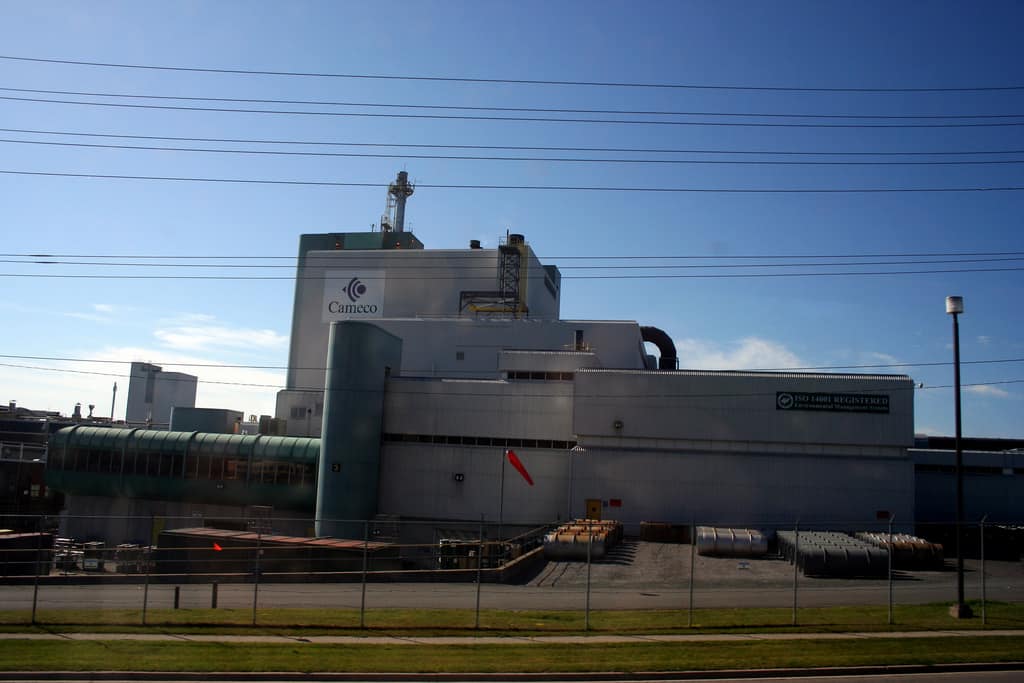Early next month, Cameco Corp. (TSX:CCO)(NYSE:CCJ) will release results on the latest fiscal quarter. The beleaguered uranium miner has seen more than its fair share of troubles over the past few years, as a global supply glut and weak demand have wreaked havoc on the price of uranium for the past seven years.
Prior to the Fukushima disaster in 2011, uranium traded at upwards of US$60 per pound, with strong prospects visible across the industry.
But when the Fukushima disaster occurred, that demand and future potential all but evaporated overnight. Uranium prices began a multi-year drop, which has kept them in the low US$20 range, leaving miners such as Cameco mining a product which is now a third of its value and that nobody wants, causing a global supply glut.
Cameco largely escaped from what could have been a much worse predicament. Uranium contracts typically span a decade or more, meaning that many of the uranium contracts Cameco still has today are from the pre-Fukushima era and coming up for renewal.
The risk and reward
Cameco is not the only uranium miner feeling the pain. KazAtomProm, the world’s largest producer of uranium, announced its own set of production cuts last year to coincide with further cuts by Cameco. The intent of these cuts is to reduce the supply glut and eventually swing uranium prices higher.
To help ease those cuts, Cameco shuttered some facilities and even slashed its dividend substantially from a quarterly payment of $0.10 per share to just a single payout of $0.08 annually.
The real question facing Cameco and others is whether uranium will ever recover, and the answer to that question is increasingly turning towards a yes.
While nuclear power demand all but dried up in the days following the Fukushima disaster, booming infrastructure in parts of Asia is fueling a renewed demand for nuclear power, which is clean and provides a huge amount of affordable power for rapidly growing areas.
China, India, and the U.A.E are among the countries that are constructing multiple reactors over the next few years to fill a growing gap in their electricity grids. Including those three nations, there are 57 reactors under construction around the world, with a further 160 in various stages of approval, and an even further 300 in the planning phase.
Thirty of the under-construction reactors are set to come online within the next two years, and those reactors will need fuel, which represents another opportunity for Cameco.
Lack of demand is not the only problem
Cameco has, for the most part, averted posting significantly weaker results up until recently, owing to favourable long-term contract pricing, efficient operations, and an optimistic outlook for a recovery.
Cameco is weighed down by yet another factor: an ongoing legal issue with CRA that dates back several years.
The root of the dispute relates to taxes owed through the earnings of a foreign subsidiary. A decision in favour of the CRA could leave Cameco on the hook for a tax bill upwards of $2 billion. A similar case with the IRS in the U.S. was resolved last year.
An important thing to note with respect to the CRA dispute is that the potential tax liability is already factored in to the stock price, so a favourable CRA outcome is unlikely to significantly weigh the stock down further. If there is an outcome in favour of Cameco, as there was with the IRS, Cameco’s stock could see some lift.
A decision on the case is expected later this year.
Is Cameco a good investment?
The answer to this depends on your portfolio timeline. As a long-term investment, Cameco holds significant promise, but that growth is largely dependent on uranium making a long-standing recovery to levels nearer to pre-Fukushima levels, which is not likely until later in the year at the earliest.






